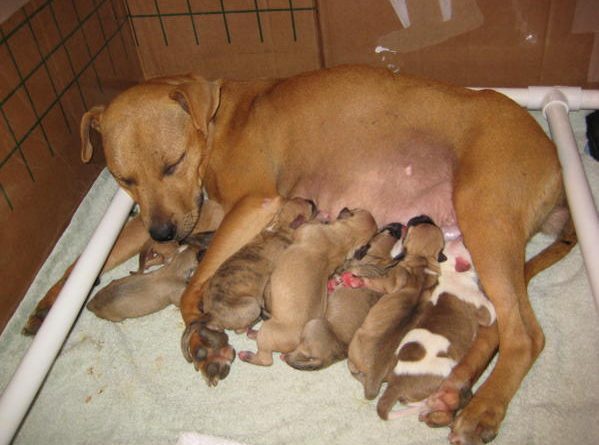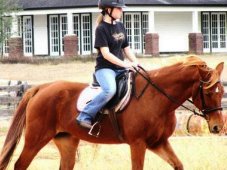Pregnancy in Dogs – What to Expect When She’s Expecting
While many pets nowadays are spayed or neutered, there are others that welcome the opportunity to have more pups in their lives. Sometimes dog owners intentionally breed their female dog (technically called a ‘bitch’) and sometimes dogs accidentally get pregnant. It is important to understand the reproductive cycle and basics of canine pregnancy if you have an ‘intact’ female dog, especially if you are interested in breeding her.
The Reproductive Cycle
For the sake of not being too technical, the reproductive cycle is divided into ‘phases’ called proestrus, estrus and diestrus. Most intact females will go through their reproductive cycle and come into ‘heat’ (estrus) every 6-8 months, depending on the breed. Some large breeds like the Rhodesian ridgeback may only cycle once per year.
The first phase of the cycle, proestrus, is characterized by a swollen vulva and bloody discharge. This ‘period’ is different from human menstruation but is no less messy. Some dogs may ‘flirt’ with a male during this period but typically will not mate. This phase typically lasts about 10 days.
The second phase is estrus, or active ‘heat.’ This is the time when she wants to mate and will allow a male to mount her. A little vaginal discharge may be present but it will be more yellow than red. This phase typically lasts 7-10 days but some dogs can still get pregnant up to 14 days after the stop of the bleed.
How can you tell if she’s pregnant?
Gestation, or pregnancy in dogs can last anywhere from 58 to 68 days, depending on the breed. Some dogs can be ‘visibly’ pregnant while others hide it extremely well. If you think that your dog might be pregnant, take her to your veterinarian. Let your vet know the dates of her last bleed or ‘heat’; especially the dates when she stopped bleeding and when she had access to a mate. This information will help determine when the puppies are due.
Vets can diagnose pregnancy at around 25 days gestation with ultrasound (heartbeats are visible). A blood test can diagnose pregnancy around 35 days gestation. X-rays can show pregnancy at 45 days gestation, when the skeletons of the fetuses are more mineralized. Your vet may be able to count the number of puppies on x-ray, but these numbers are never ‘set in stone’ as some may be missed.
What next?
If pregnancy is diagnosed, talk to your vet about recommended prenatal care. A nesting area should be provided within a couple of weeks of birth. You and your vet should discuss a birthing plan and the labor process. Some breeds may require cesarean section delivery of the puppies, such as English or French bulldogs. Around day 35 of pregnancy, caloric requirements will increase and she will require almost double the food she usually eats. Pregnant dogs should eat a balanced, commercial puppy food until the puppies are weaned, as this provides adequate amounts of protein and fat.
Most veterinarians recommend keeping the pregnant female isolated from other dogs within 3 weeks before and after delivery, to protect her from canine herpesvirus. Canine herpesvirus is a silent killer, causing only a mild cold in normal dogs, but can cause miscarriage and sudden death in apparently healthy newborns. If your vet does not recommend c-section, keep an eye on your dog’s nesting habits in the days leading up to the due date. Your vet may even recommend checking your dog’s rectal temperature regularly. Dogs typically have a normal temperature around 101-102 F, and when the temperature drops below 100 F, labor may be expected within 24 hours. Thankfully most dogs deliver healthy puppies on their own, without human intervention.











